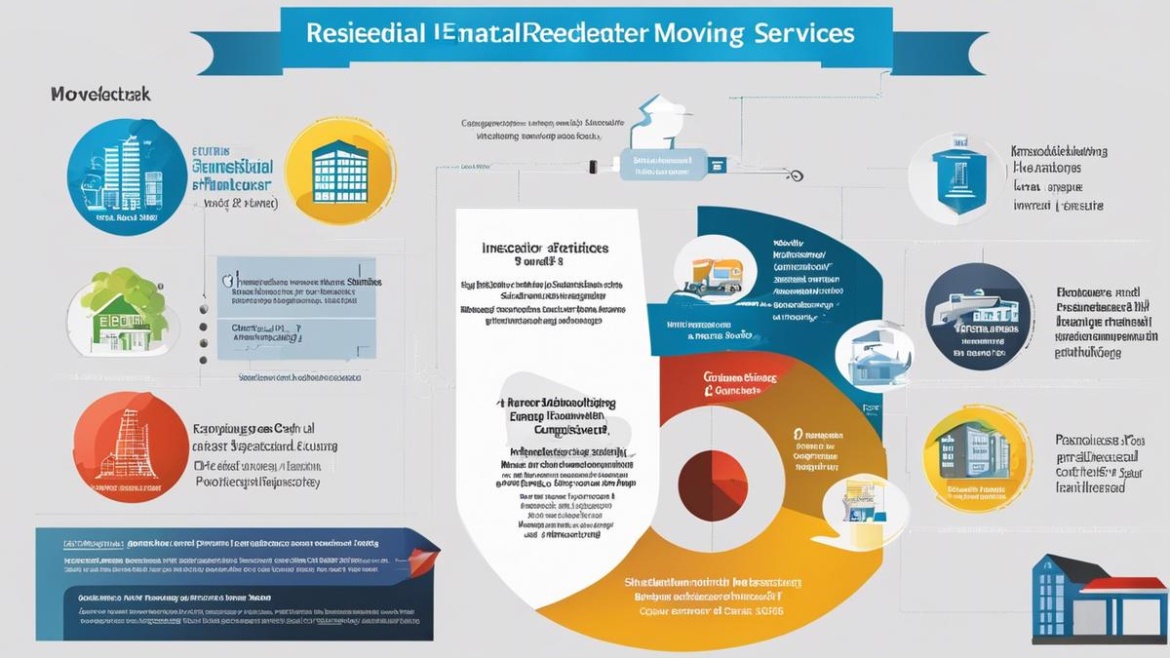In today’s dynamic landscape, the residential moving services industry is being revolutionized by myriad changes, ranging from technological advancements to shifts in consumer behavior. No longer bound by traditional constraints, entrepreneurs within this space are leveraging these changes to create innovative models that redefine the industry’s norms. The following examination dives into an in-depth evaluation of current market trends, innovative business models making waves in the residential moving industry, and strategic cost and pricing strategies that define profitability. By exploring these focal points, this evaluation seeks to equip existing and aspiring entrepreneurs with valuable insights that can help them steer their businesses towards success in this competitive industry.
The Market Overview and Trends in Residential Moving Services
Emerging Trends Take Center Stage in the Residential Moving Services Market
Deep within the fast-paced world of business, market trends sweep in and out like ocean waves, leaving dynamic landscapes in their wake. The residential moving services industry is no stranger to these sweeping changes. This vibrant sector is carefully refining the traditional moving concept, forever altering the customer experience. Punctuated by cutting-edge technology, better business practices, and customer-oriented strategies, the moving industry is taking bold strides into a future replete with innovation.
Enter the Technological Revolution
One cannot deny the pervasiveness of technology in today’s market environment. We’ve shifted from paper and pencil logistics to sophisticated software programs. Moving companies incorporate inventory tracking databases, smartphone apps, and VR technology ensuring slick, error-free operations and offering a seamless experience to the customers.
High expectations need results, but how can a moving company deliver if they can’t track where things are? State-of-the-art GPS tracking ensures movers can monitor their trucks in real-time, offering clients peace of mind and regular updates about their precious cargo.
Rise of Eco-friendly Moving
The world is going green, and the moving industry isn’t immune to this change. Eco-conscious consumers demand their moving needs be met while still protecting the planet. Enter green moving – use of sustainable packing materials, reduction of fuel emissions, and recycling of used materials. An industry that once churned out enormous carbon footprints is now serious about its ecological responsibility.
New Business Models and Practices
The entrepreneurial spirit burns bright amidst the evolving environment of the moving service industry. An exciting development is the evolution of new business models. Peer-to-peer moving services epitomize this entrepreneurial output, offering non-traditional, personalized help that can flex according to the needs of the client.
Corporate Social Responsibility (CSR)
CSR is no more a buzzword in the corporate world, it’s a staple. The residential moving services industry is rallying toward it too. From charitable works, partnerships with NGOs, to running initiatives for the underprivileged sections of society, companies are actively integrating CSR into their core business strategies.
The Demand for Quality and Professionalism
The values of professionalism and high-quality service now permeate this industry. Consumers demand transparency, punctuality, accountability, and courteous behavior. Due to the increasing competition, businesses which fail to uphold these quality standards risk getting swept away by the tide of change.
In conclusion, the residential moving services industry is in a constant state of flux, steered by technological advancements, environmental consciousness, innovative business models, CSR integration, and a pivotal focus on customer service. These emerging trends act as the compass guiding future strategies, paving the way for a more flexible, intuitive, and considerate moving service industry. The future of moving has arrived.

Innovative Business Models in Residential Moving Services
Smart Technology and Flat-Rate Moving Services: Revolutionizing the Moving Industry
The rise of smart technology is not only a characteristic of giant industries such as commerce, transportation, and healthcare; it also deeply affects niche sectors such as residential moving services. The forefront of this revolution is marked by streamlined services, like flat-rate moving, bringing a wave of convenience to the consumer while raising the bar for competitors.
Flat-rate moving is a significant innovation in the moving industry, offering clear pricing without hidden fees or surprise costs. Companies that offer this model, like FlatRate Moving and Bellhops, have seen promising growth by delivering certainty in an industry that, for a long time, was shrouded in financial ambiguity.
On the flip side, the advent of flat rates necessitates advanced organization skills and accurate inventory management, making room for cutting-edge technology to assist movers. Today’s moving companies employ mobile apps equipped with detailed inventory lists and image-capture technology, an invaluable tool for accurate quotes and streamlined moving experiences.
Bridging the virtual gap, a handful of companies are employing virtual estimates. Potential customers share details and videos of their home to obtain a moving estimate, bypassing the need for an in-person survey. This time-saving approach reduces costs and enhances efficiency, a win-win for both consumers and moving businesses.
Moreover, companies are investing in software that automates logistics, such as time tracking systems, distribution of resources, and coordination among team members. As the saying goes, “Time is money,” and these efficiency-driven tools are saving bags of both.
Amidst this technological revolution, the business model that is truly rising above is the fractional-moving-service. Creeping into the space is the shared economy, previously seen disrupting industries like transport (Uber) and hospitality (AirBNB). This model gives customers the opportunity to hire movers by the hour for specific tasks like packing, loading, or driving, thereby proving that sometimes, less indeed is more.
Companies like Yardrom, and Bellhops are leading the charge with their innovative models. These platforms offer a user-friendly experience, allowing clients to pick and choose services within their budget, and calling upon a flexible, contract-based workforce.
At the intersection of social impact, several companies are introducing daily wage programs and skill development initiatives for their temporary workforce, turning the tide for gig economy workers.
In conclusion, the residential moving service industry is not only modernizing, it’s transforming. Companies that are quick to integrate tech solutions, transparent pricing and flexible service models into their growth strategies are leading this exciting new era in moving services. Evolving customer expectations are the true driver, demanding better service, transparency, and convenience from this traditionally blue-collar industry. The demand is loud, clear, and the industry is hustling to not just meet – but exceed it. Innovation is the ticket, and the ride is wide open for those willing to jump aboard.

Economic Impact: Cost and Pricing Strategies for Residential Moving Services
Developing an economic and effective pricing strategy in the residential moving services industry demands a nuance understanding of market dynamics, customer needs, and industry trends. The key to innovation is to create value while ensuring cost-efficiency.
A deep dive into market research can unveil the gaps in consumer needs that surface as pain-points. These gaps, when fortified with a service or product that resolves the user’s predicament, not only strengthen the customer relationship but also spell out strategic offering differentiators. In the residential moving industry, for instance, an important consumer need might be reliability, particularly for urgent relocations. Accordingly, a shrewd business strategy would be to offer last-minute moving services at a slightly higher cost, but within a reasonable range to maintain affordability. The differentiator is the speedy response, the premium is for the urgency – an innovative and constructive pricing strategy that generates additional revenue while fulfilling an existing market need.
Moreover, fostering client relationships with consistent performance, excellent service quality, and transparent customer dealings forms the basis for customer loyalty. In an industry where referrals and reputation carry weight, the assurance of intricate care and proficient service can allow businesses to charge a competitive rate for their services.
Drawing from other sectors’ best practices, the concept of dynamic pricing can be adopted. Well-known in the airline and hospitality industries, prices fluctuate according to demand and seasonality. This economics principle, implemented effectively, could drive revenues in peak moving seasons, balancing out quieter periods.
Moreover, leveraging partnerships can open up alternative revenue streams while optimizing costs. For example, collaborating with real estate agents or property managers could result in client referrals, while partnering with packaging vendors could reduce expenses on packing materials. These cost savings could be reflected in pricing which could serve as a competitive advantage.
Another trend led by technology startups is a subscription-based model. Customers pay a regular fee to avail of services with easier terms, like cancellation and rescheduling. In the moving services industry, this could apply to repeated, regular moves for businesses like event planning or commercial goods delivery.
Balancing the quality, convenience, and cost, the introduction of tiered service levels could cater to varying financial thresholds. For instance, a no-frills, basic moving package could be designed for budget-conscious consumers, a standard package for regular demand, and a premium full-service offering for those willing to pay for added comfort and convenience.
By exploring alternative revenue avenues, leveraging partnerships for cost optimizations, creating a diverse portfolio with tiered pricing, and harnessing market dynamics, the residential moving services industry can formulate economic and effective pricing strategies. Innovation lies at the heart of these strategies – continually recognizing market demands, adapting to trends, and reinventing offerings are essential to maintain a competitive edge in the future.

In the fast-paced world of residential moving services, understanding and integrating market trends, innovative business models, and strategic cost and pricing strategies are no longer optional—they form the pillars of success. As market demands continue to evolve and competition intensifies, those that can effectively respond to these shifts and craft a well-strategized plan stand the best chance to thrive. It’s an exciting time for the industry, and for those who are willing to embrace change and continuously adapt, the opportunities awaiting are boundless. By harnessing the information shared, individuals and companies can strategically position themselves for success in the ever-changing residential moving services industry.

